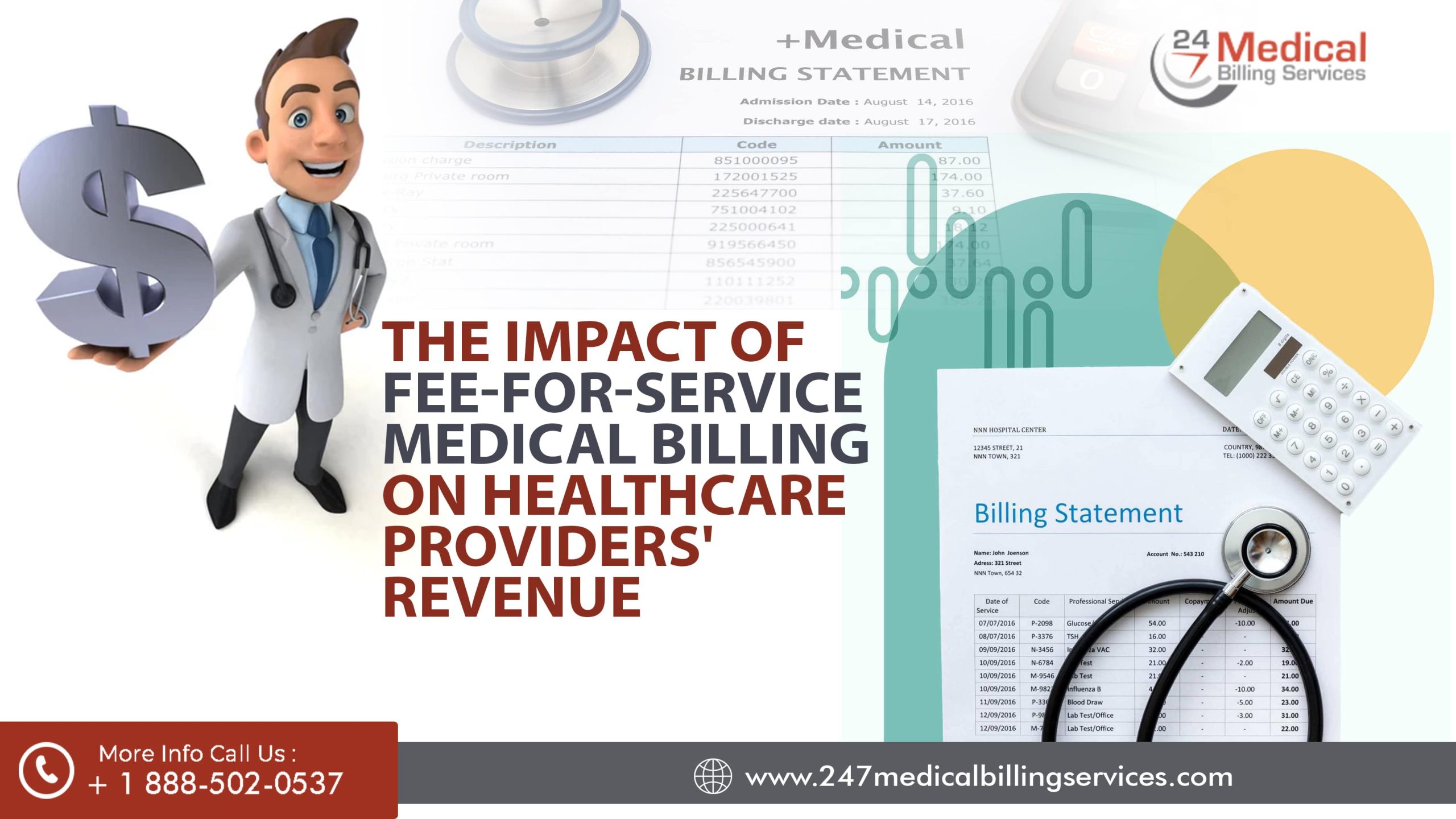
The Impact of Fee-For-Service Medical Billing on Healthcare Providers' Revenue
Fee-for-Service (FFS) medical billing is a reimbursement model in healthcare where providers receive payment for each service or procedure they perform. Under this system, healthcare providers bill insurance companies, government programs, or patients directly for individual services rendered, and they are reimbursed according to a predetermined fee schedule. Each service, such as an office visit, diagnostic test, or surgical procedure, has a specific billing code associated with it, and providers submit claims for each service provided.
The reimbursement amount is typically determined by factors such as the complexity of the service, geographic location, and negotiated rates with payers. FFS billing contrasts with other reimbursement models, such as capitation or bundled payments, where providers receive a fixed payment per patient or episode of care, regardless of the number or type of services provided.
Fee-For-Services vs. Value-Based Care (VBC)
| Basis of Difference | Fee-for-Service (FFS) | Value-Based Care (VBC) |
| Outcomes and Quality of Care | FFS emphasizes the quantity of services, potentially increasing costs. | VBC prioritizes preventive care and chronic condition management, focusing on patient outcomes and quality, ultimately lowering long-term healthcare expenses. |
| Reimbursement and Financial Risk | FFS reimburses providers per service, leading to overutilization and higher costs. | VBC rewards providers for quality care and positive outcomes, reducing financial risk by incentivizing preventive measures and patient health maintenance. |
| Transition to Value-Based Payment Models | The healthcare industry is shifting from FFS to VBC, driven by payers promoting population health and improved care quality. | Providers are encouraged to adopt VBC models for better outcomes, cost control, and patient care, spurred by payer incentives and regulatory changes. |
| Financial Incentives and Out-of-Pocket Costs | FFS may result in variable out-of-pocket costs, as services are billed separately, potentially leading to higher patient expenses. | VBC offers incentives for high-quality care, aiming to lower patient out-of-pocket expenses by emphasizing preventive and chronic care management. |
| Claims and Forms | FFS involves submitting claims for each service, creating administrative burdens and higher costs. | VBC simplifies the claims process by focusing on outcomes and quality, reducing administrative complexities and expenses for providers. |
| Accountable Care Organizations (ACOs) | ACOs don’t operate under FFS models. | ACOs align with VBC principles, encouraging provider collaboration to achieve positive patient outcomes and reduce healthcare costs through coordinated care. |
Pros:
- Increased Revenue Generation
- Financial Autonomy
- Patient Satisfaction Enhancement
- Established Infrastructure Support
Cons:
- Overutilization Risks
- Administrative Burden
- Downside Financial Risk
- Lack of Value-Based Care Incentives
Wrapping Up!
Though Fee-for-Service (FFS) medical billing offers both pros and cons for healthcare providers, the use of such a model depends on various factors. The increased revenue potential and financial autonomy offered by FFS can empower providers to deliver a wide range of treatment options, enhancing patient satisfaction and leveraging established infrastructure. However, the risks of overutilization, administrative burdens, financial uncertainty, and a lack of value-based care incentives highlight potential drawbacks.Ultimately, the decision to utilize FFS should consider factors such as practice priorities, patient demographics, regulatory requirements, and the hospital's capacity to mitigate associated risks. By carefully weighing these factors, healthcare providers can determine whether FFS aligns with their objectives and operational capabilities, thus optimizing revenue generation while prioritizing patient-centered care delivery. For more information, you can also contact the team of 24/7 Medical Billing Services.

.png)